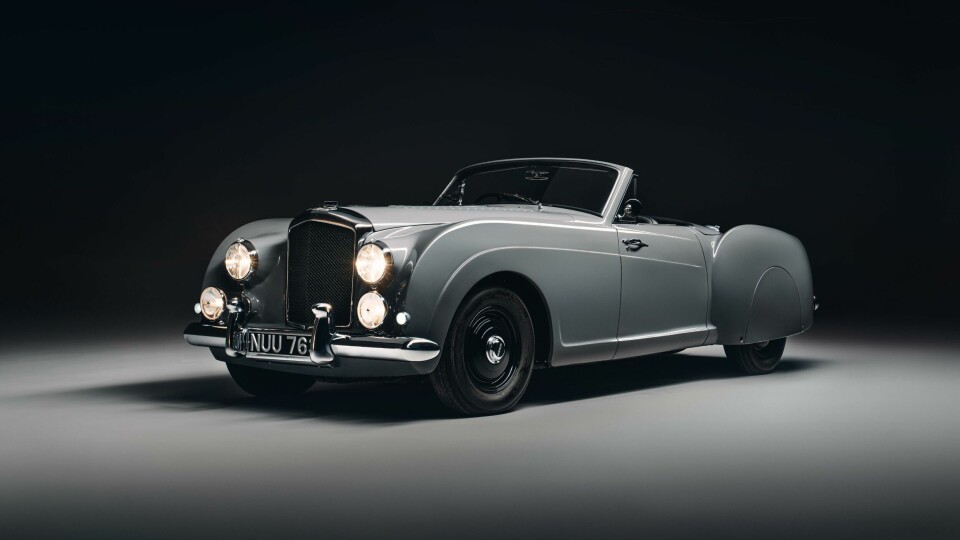
Designer realises childhood dream with James Bond’s Bentley Continental
The James Bond novel Thunderball saw Ian Fleming vividly describe a Bentley Continental Mk2, a car that didn’t outside the pages of fiction. Car designer Tony Hunter remedied this by designing and building his own
When Tony Hunter was a boy, he had two loves: Biggles and James Bond. Thankfully for the world of car design, he was inspired by 007’s passion for cars and followed this thread into a career in automotive design. Had Biggles come out on top, we could be talking about an aeronautical project instead.
While Bond’s car of choice has become associated with Aston Martin following the brand’s presence in the film franchise, the books tell a different story. Ian Fleming described a large two-seater convertible Bentley dubbed ‘The Locomotive’. Despite Fleming’s in-depth depiction, Bond’s Bentley was merely a subject of the reader’s imagination.
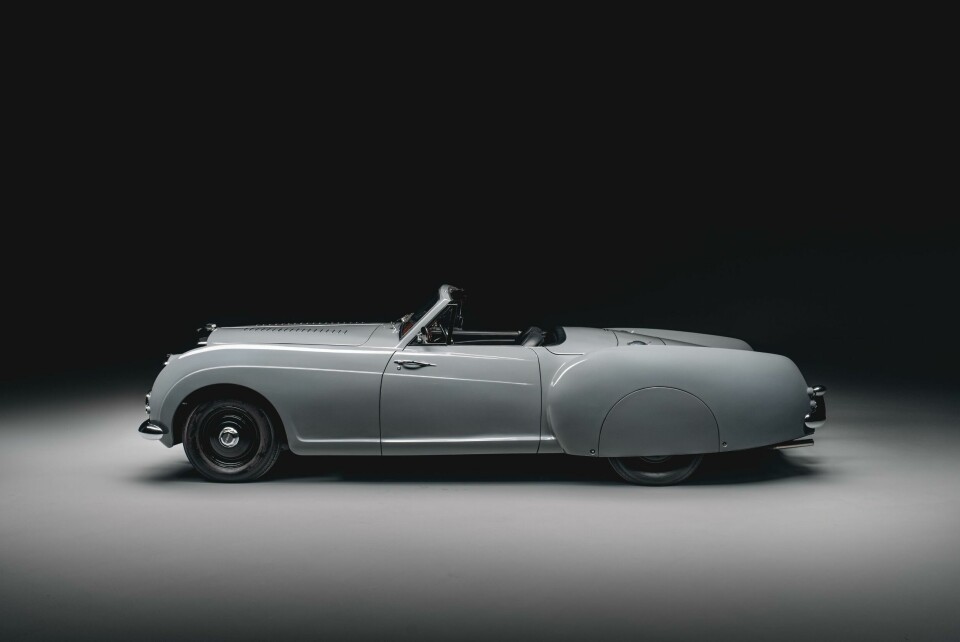
“‘Bond had the most selfish car in England…’ These words and the description of the vehicle that followed haunted me ever since I read them as a teenager in my bedroom in Scotland,” Hunter said. “It didn’t sound as outrageous as the Batmobile or as extravagant as Lady Penelope’s FAB 1, but something reverberated within me whenever I read those lines.”
After exploring a number of different alternatives to the Bentley he’d pictured, in 2012, Hunter decided he had no choice but to build his own version. What he originally thought would be an 18 month project spanned seven years.
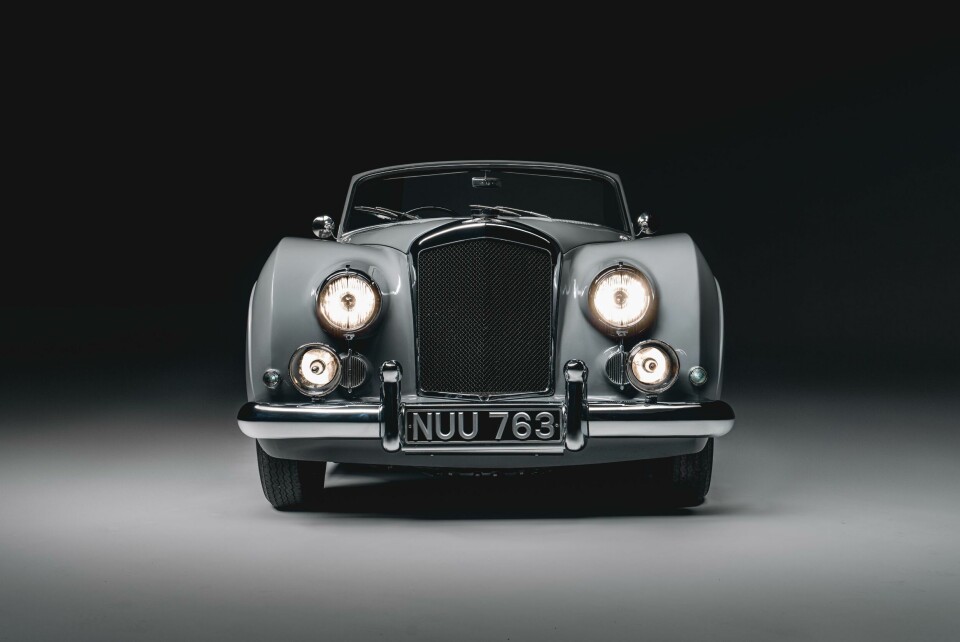
In contrast to typical design projects, Hunter said, “It’s a new piece of design, it’s just been designed in a different temporal direction to what we would normally do. We design something to look appropriate for the next 10 years. What I was designing was something to look appropriate for 70 years ago, there’s just as much design work that goes into it.”
Of course, in true Bond style, the interior is littered with hidden features, secret compartments and switches for the essentials: machine guns, oil, smoke and hindsight. Although hindsight wasn’t a stock Bond feature, Hunter said. “I keep getting told it’s a wonderful thing, so I’ve got a switch for it.”
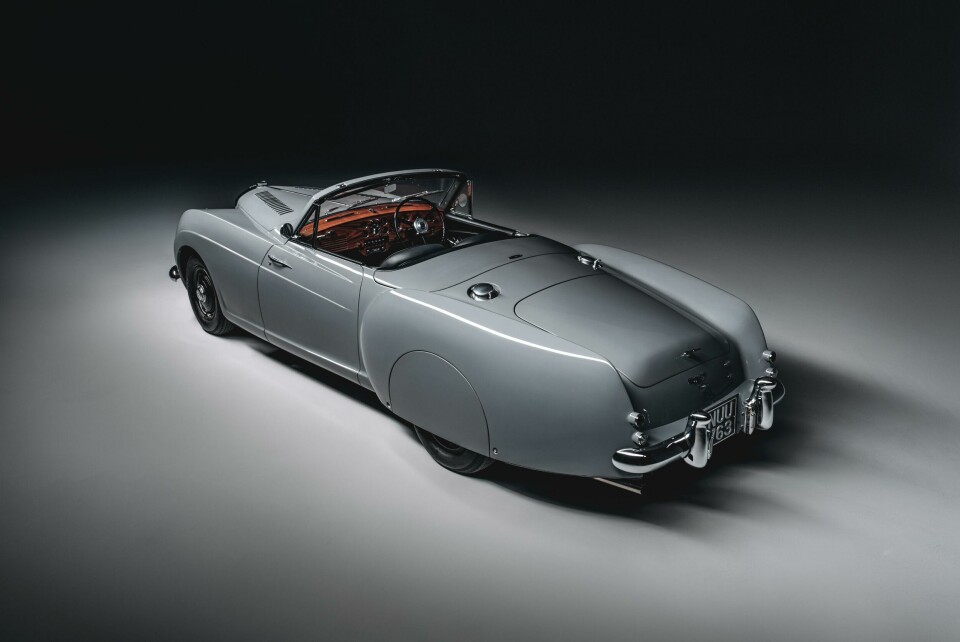
Car Design News: Walk us through the design process. Where did you begin?
Tony Hunter: My aim was to create something that could have, and would certainly look like it could have, been built in the 1950s, but not just a simple cut down Continental. I spent years doodling and sketching what this car might be like, long before I even considered the idea of building it. It was the inspiration behind a Rover saloon concept I worked on back in about 1992 that never came to anything more than a 40% clay model and an MG concept I did in 1998 which reached a similar level of development.
Being a car designer, I tried to imagine what the customer would have wanted. James Bond had a string of Bentleys; it’s mentioned that his first one was a 1930s Blower. In the earlier books he drove a Blower that got destroyed but that car was his passion. I figured if he was replacing it then he would look to pull some design cues from the earlier Bentley. I also did a lot of research into what H. J. Mulliner & Co. coachbuilders were doing back in the ‘50s.

If I were the man at Mulliner and Bond had approached me, one of the questions I would ask is, ‘What are your influences?’ I tried to imagine what that conversation might have been like and, drawing from past experiences, I imagined how Bond might have felt in his Bentley Blower looking down the louvres and seeing the sun glinting on them and I thought that’s something he would have liked.
When it came to developing it, I’d done a bit of work for another company on a Bentley Continental coupe so I had the package for the chassis and everything already there. I very roughly sketched over that and put together an Alias model which was sent to the coachbuilders. They cut sections through my model and made a wire frame that would follow the shape of the body panels which were hand formed in aluminium.
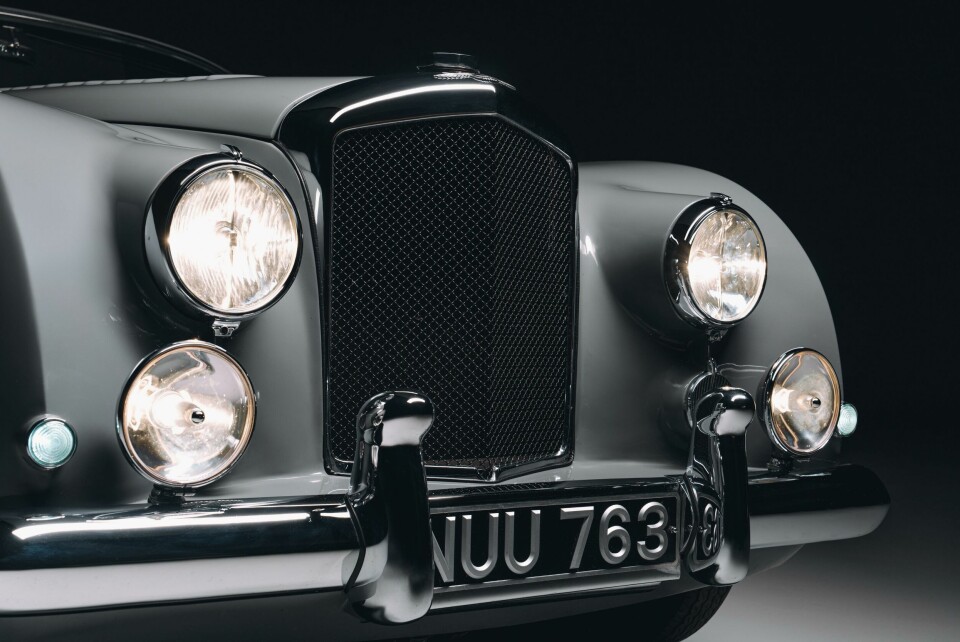
CDN: How did you achieve a 1950s-style look?
TH: I tried to draw in as many things as possible that were original, like little components, door handles and instruments so that the finished car would look like something that had been built in the 1950s.
I decided the car would probably have been built around 1957 or 1958, so it would’ve had straighter sharper lines as on the S1s that were on sale by that time, rather than the softer more rounded earlier R-Type Continental’s form. Fleming describes the car as being quite knife-edged, sharp and almost a bit brutal. That fits the description of the later Continentals, so I gave it a much higher waistline.
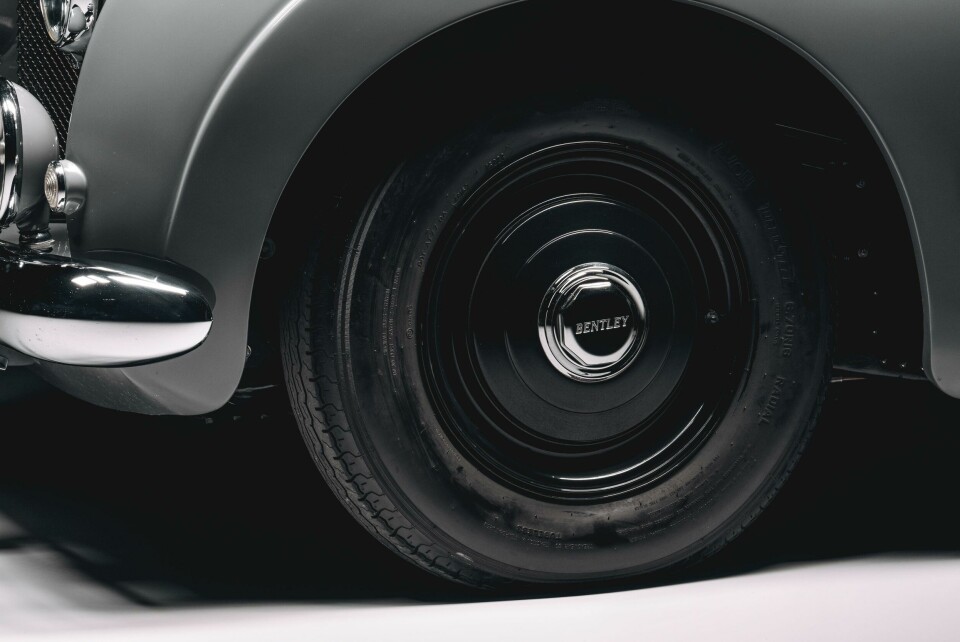
CDN: Were there any inconsistencies with how it would have been designed back then?
TH: It’s technically incorrect but it’s got suicide doors. As a car designer I’ve always liked doors that open in a strange way. It seems wrong for me not to have a concept that doesn’t explore a different way of getting into the car. And, having had a couple of old Bentleys, this is actually quite a practical way to get in and out.
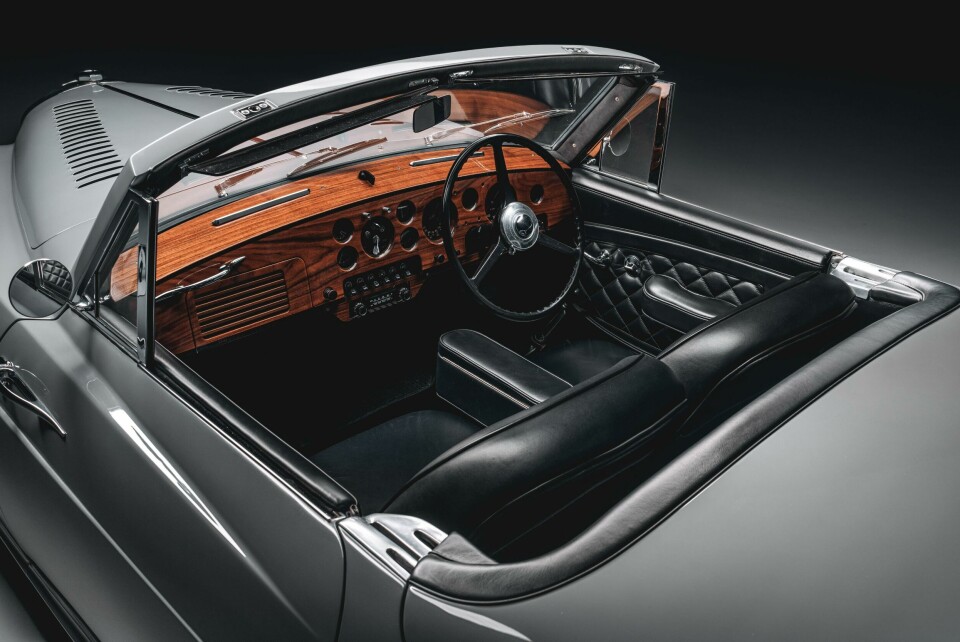
I justified it because of a story I’d heard about the Fiat 500 back in the 1960s. When Fiat changed the 500 from having reverse opening doors to standard doors apparently there was a big outcry in Italy. Everybody complained because – I’m quoting here, I’m not being sexist on my own – apparently when ladies used to get out of a car with reverse opening doors they flashed their legs and Italian men liked this. I thought that Fleming, with the sense of humour he had, might have appreciated that kind of thing. Apart from that I just think it makes it look quite spectacular when you have the doors open.
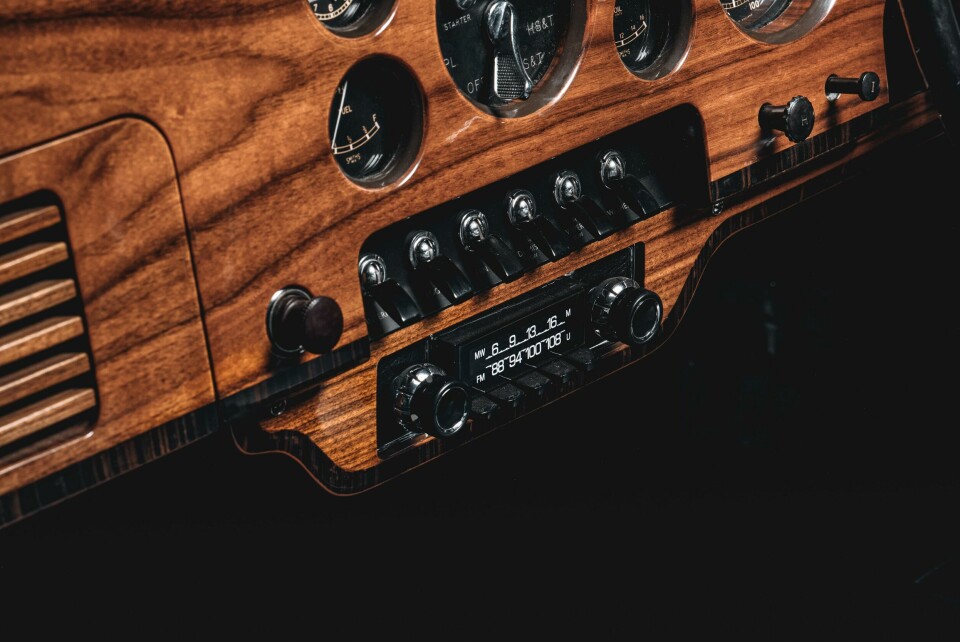
CDN: What’s your favourite aspect of the exterior design?
TH: I love the rear wings. There’s just a hint of so many things about them. They’re slightly exaggerated compared to what they probably would have been but I like that. Fleming’s description was about it all being knife-edged and rather ugly. I wasn’t going to have the ugly part but I was quite happy with the knife edge. I also love the spats over the rear wheels because it gives it that slightly 1950s space-age aerodynamic look which is a weird combination but it really works somehow.
The Locomotive is one of those mad crazy personal visions which all designers should have a go at. So rarely do we get to create something unfettered by the restrictions of regulations, market requirements and other designer’s opinions.
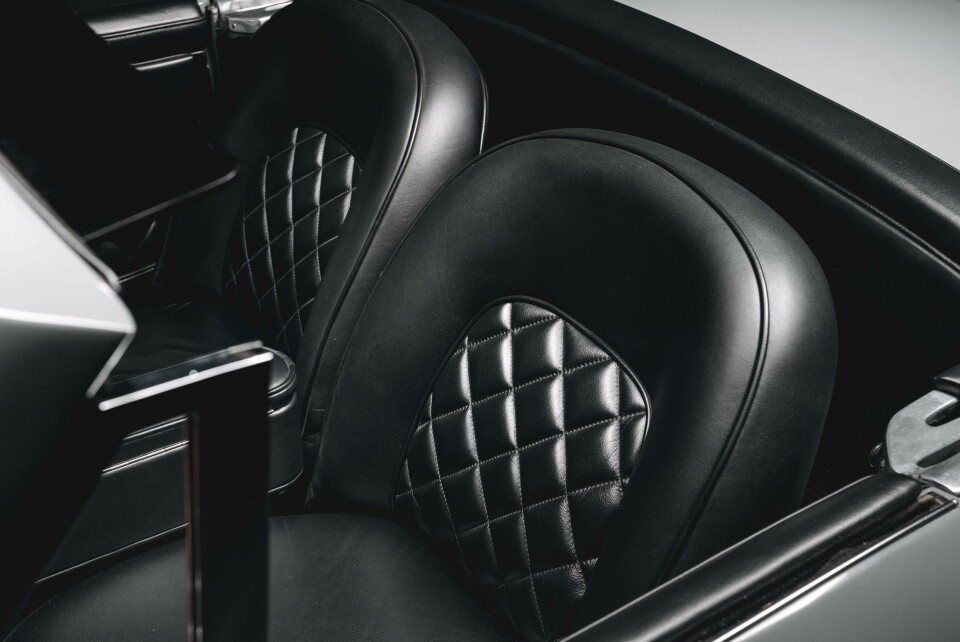
CDN: What was the thought process for the interior?
TH: I wanted to get a cosy compact gentleman’s club air to it whilst keeping a look of functional luxury. I’ve always had a thing about quilted seats, I put it in the Mini and I also put it in the Rover 200 BRM. As it’s reminiscent of the pattern on a chesterfield club chair I felt it was apt for the Locomotive. The seats are trimmed in period-correct Connolly leather because I felt that feel and Connolly smell was really important.
The instrument panel is of a similar shape to that of the Continental but with an improved instrument layout and the inevitable secret compartment behind the speaker grill. It’s veneered with straight grained black American walnut, my favourite wood and one that was widely used in the ‘50s in American interior design. I felt Bond (and Fleming) as an Americanophile would have appreciated it. The inset is black Macassar ebony, which I acquired many years ago working on a Range Rover project, and I thought the dark colour worked well with the black hide.
CDN: Tell us some more about the details inside and any Bond modifications.
TH: There’s little details which aren’t quite as Bentley would have done but they’re things that I love in cars. I’ve always loved the tactile clunk of the old Lucas toggle switches (I used them as a benchmark when I did the BMW Mini interior). I felt that the tactility of the interior – as with all interior design – was really important. I wanted it to be fun and have a nice action to everything.
The graphics below the switches and on the instruments are all period correct Gill Sans font. To enhance Fleming’s “large armed” look to the seats, I created a centre console with an armrest which lifts up to reveal a tongue-in-cheek bank of matching Lucas switches for the defence mechanisms, and a black Bakelite telephone handset that came from a 1950’s RAF bomber. It works and connects to an iPhone in another secret compartment. Also hidden below is a pop out drawer released by a knurled brass button, which contains the required aids for Bond’s long distance drives: a hip flask, small collapsible cup and a tin of Benzedrine tablets.




















